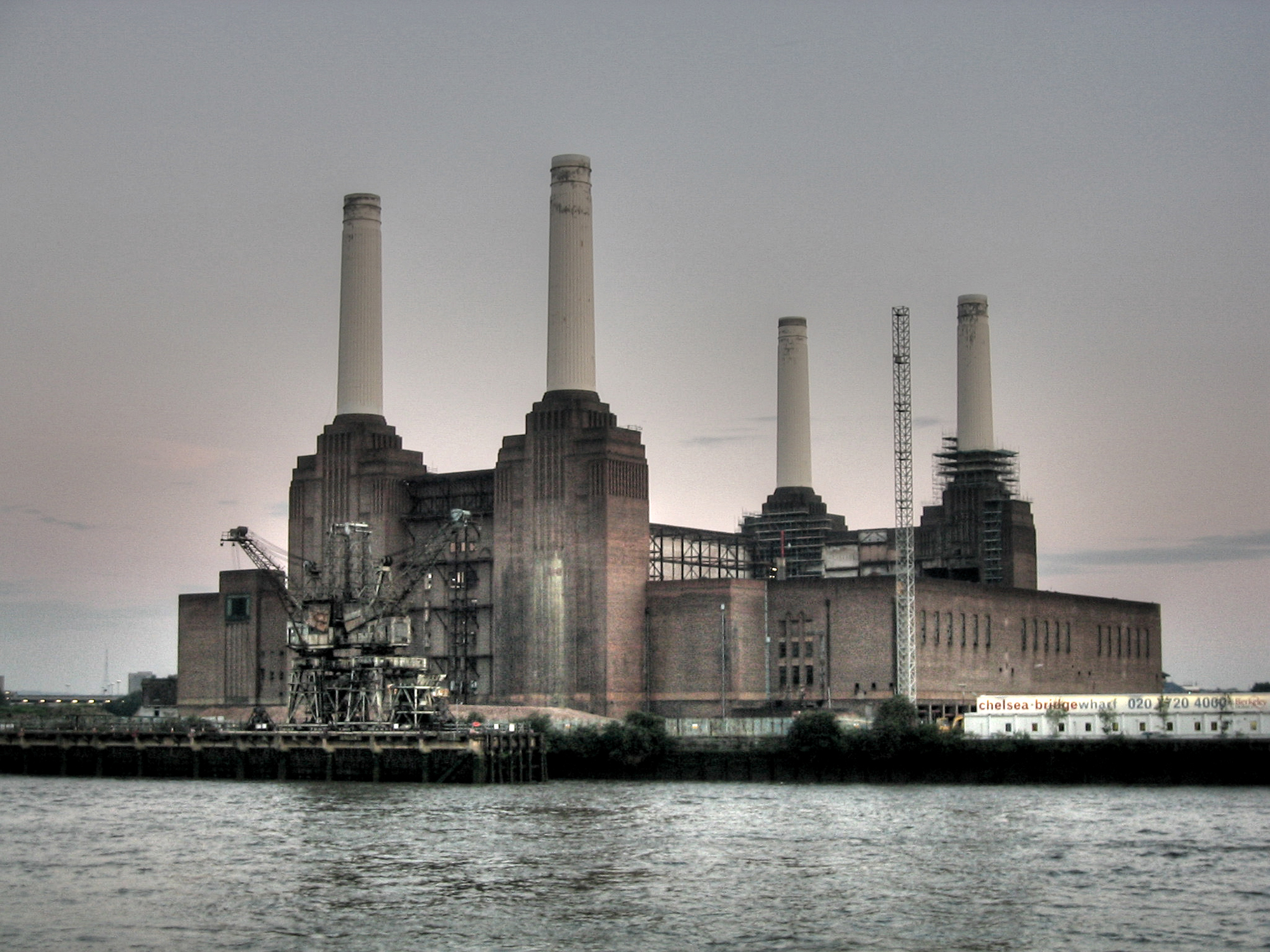The Battersea Power Station is a decommissioned coal-fired power station located on the south bank of the River Thames, in Battersea, South West London. It comprises two individual power stations, built in two stages in the form of a single building between the 1930s and 1950s 1. The station complex ceased generating electricity in 1983, due to the obsolescence of its machinery and to the gradual attempt in the UK for replacing coal-fuelled power stations to more environmental alternatives of generating electricity—a struggle that has taken more than thirty years since the Clean Air Act of 1956.
Over the past 50 years, the The Battersea Power Station has become an emblematic landmark of the city of London and the station’s celebrity owes much to numerous cultural appearances, both in audiovisual and printed media. The site also has a Grade II listed status in the UK national heritage.
Since the station’s closure the site has remained largely unused, with several unsuccessful redevelopment plans intended by different site owners. In 2006, the power station was bought by an Irish real state company that failed in the attempt of giving a public use to the site including the construction of a large housing complex surrounding it. Six years later, in 2012 the power station was sold to a consortium led by Malaysian infrastructure and business company.
Last year (2013), the consortium of SP Setia Berhad; Sime Darby; & Employees Provident Fund, launched their new development project featuring a series of buildings around the former power plant, including housing, leisure, business and cultural facilities. It is uncertain to tell at this point the impact of this project in the city of London, but it is this specific stage what makes this iconic construction the center of attention to both urban developers and for Colombian artist Nicolás Consuegra.
My proposal entitled The grit and the dust, interprets the power station as a scaled-size object—a fully functional a pool billiard table—left upside down. While the chimneys of the power are shut off as they become legs, the sort of ‘floor plan’ on the top (the billiard table) is brought to a more complex level as there are four additional holes to the table.
With this proposal, I intend to recall both the 1956 Clean Air Act 2 and the subsequent proposals that try to relocate and even put coal-fired power stations out of use in London and the nearby area due to the massive amount of pollution they generate. In addition to this I am also prone to thinking on the global interest for refurbishing massive industrial sites for public (cultural) use. The eight-hole billiard pool table becomes somewhat of a metaphor that refers to the handful of possibilities that have been considered for renovating the Battersea Power Station and also the economic interest being put on a district in South West London that has been—from the late 18th century up to recent times—an industrial area that has been heavily affected by issues associated with high pollution levels and poor housing projects.
—
Notes:
1. Wikipedia
—
Further reading:
Battersea’s seriously back on the big map
—
Credits:
3D renders by William Sarria



